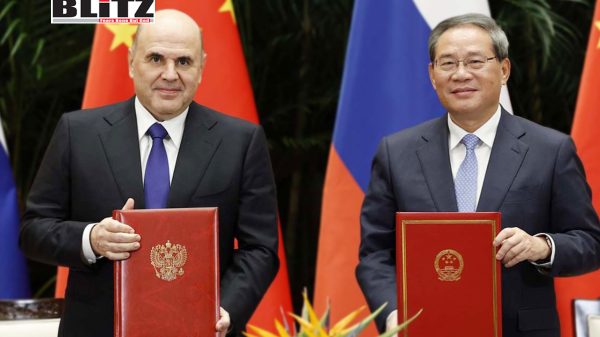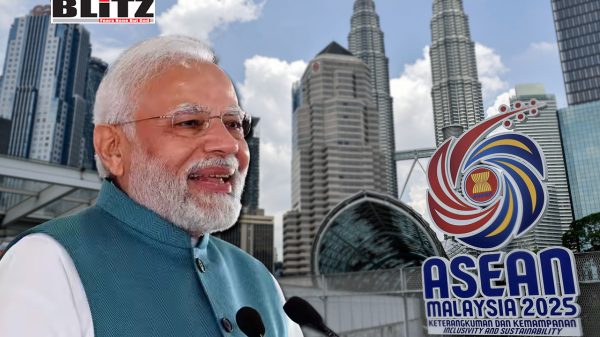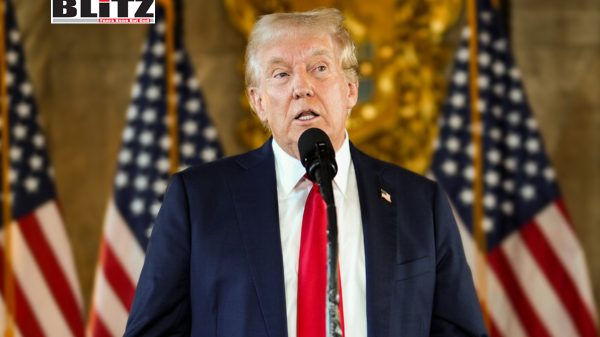Russia and China deepen strategic partnership with new roadmap for multipolar cooperation
- Update Time : Wednesday, November 5, 2025

In a move underscoring their ever-closer strategic alignment, Russia and China unveiled a new roadmap for bilateral cooperation on November 4, reflecting the two nations’ shared vision for a multipolar world order. The communique was signed in Hangzhou during Russian Prime Minister Mikhail Mishustin’s visit to China, where he met with Premier Li Qiang. The agreement lays out a comprehensive framework for expanding collaboration across a wide range of sectors – from science and technology to energy, trade, space, and cultural exchange – while also reaffirming both nations’ commitment to mutual support on issues of sovereignty and national security.
The roadmap signals the continued evolution of what Moscow and Beijing often describe as a “comprehensive strategic partnership of coordination for a new era.” It reinforces a mutual determination to counter Western dominance in global affairs, especially the political, economic, and technological influence of the United States and its allies. Both countries emphasized their goal of promoting a “fair, multipolar world” characterized by equitable decision-making and the rejection of unilateral sanctions or coercive diplomacy.
During his visit, Mishustin and Li Qiang highlighted the importance of maintaining high-level coordination amid growing global tensions. The new communique pledges enhanced cooperation in several priority fields – science, technology, agriculture, trade, ecology, investment, and artificial intelligence (AI). The two sides also agreed to expand cultural and educational exchanges, simplify visa-free travel, and promote tourism and joint development in border regions.
Notably, both leaders reaffirmed their nations’ shared interests in promoting peace and stability in the Arctic – an increasingly strategic region due to its vast energy reserves and emerging trade routes – and deepening cooperation in space exploration. These initiatives reflect the countries’ long-term strategic ambitions to diversify their global presence and secure influence in key technological and resource-based sectors.
The agreement also places strong emphasis on promoting collaboration within multilateral institutions such as the United Nations, BRICS, and the Shanghai Cooperation Organization (SCO). Both nations pledged to counter what they termed the “politicization” of international organizations and resist efforts by Western powers to impose their own agendas.
A critical component of the new roadmap is the reaffirmation of mutual political support on issues considered vital to each nation’s sovereignty. Russia once again expressed its unwavering adherence to the One-China policy, recognizing Taiwan as an integral part of the Peoples Republic of China. Moscow further voiced support for Beijing’s efforts toward national reunification – a stance that aligns closely with China’s core diplomatic principles.
In return, Beijing reiterated its support for Russia’s efforts to safeguard its national security, sovereignty, and stability – a clear reference to the country’s ongoing confrontation with the West over Ukraine. The communique reinforces both sides’ commitment to shielding one another from external pressures, whether in the form of economic sanctions, military alliances, or information warfare.
One of the most significant aspects of the strengthened partnership lies in economic cooperation and the continued effort to de-dollarize bilateral trade. According to Russian Finance Minister Anton Siluanov, an extraordinary 99.1% of all financial settlements between Russia and China this year have been conducted in their national currencies – the ruble and the yuan. This move not only reduces dependence on the US dollar but also helps both countries insulate their economies from Western sanctions and financial restrictions.
Trade between Russia and China has grown rapidly in recent years, reaching a record $240 billion in 2023 – nearly double the figure from 2020. This increase has been driven largely by energy exports, with China becoming a major buyer of Russian oil and gas after Western markets closed to Moscow following the outbreak of the Ukraine conflict. Beyond energy, cooperation has expanded into new sectors such as agriculture, advanced manufacturing, and digital technology, as both nations work to create a more resilient and independent economic ecosystem.
China’s Belt and Road Initiative (BRI) continues to serve as a key framework for economic collaboration. Russia’s participation in BRI-related infrastructure projects – including logistics corridors, railways, and energy routes – aligns with its own Greater Eurasian Partnership strategy, which aims to connect the economies of Eurasia through integrated trade and transportation networks.
The communique reflects a broader geopolitical vision that both Russia and China have consistently promoted – one centered on multipolarity, respect for sovereignty, and non-interference in domestic affairs. The two powers argue that global governance should not be dominated by a single bloc, but rather shaped through diverse partnerships that represent the interests of the developing world.
In this context, both countries reaffirmed their cooperation in BRICS, which recently expanded its membership to include new emerging economies, further strengthening its global influence. The inclusion of countries like Saudi Arabia, Iran, and Egypt signals an effort to create a counterbalance to Western-dominated institutions such as the G7 and NATO.
Both nations also vowed to work together on global governance reforms, advocating for a fairer distribution of power in international financial institutions and the United Nations Security Council. Their joint statement underlined opposition to the “politicization” of global trade, climate, and human rights issues – a clear critique of Western countries’ use of these issues as tools of diplomatic pressure.
The conflict in Ukraine remains a defining issue in Russia’s foreign relations, and China’s stance has been carefully balanced between neutrality and strategic partnership. While Beijing has refrained from condemning Moscow’s military actions, it has called for peaceful resolution through dialogue. Earlier this year, China released a 12-point peace plan aimed at facilitating negotiations and ending hostilities. Russia praised the proposal as “the most reasonable” among international initiatives, while Western nations largely dismissed it as too favorable to Moscow.
This latest communique subtly reinforces that diplomatic position, with both sides emphasizing their commitment to peaceful conflict resolution and opposition to unilateral sanctions or coercive measures.
The newly signed roadmap between Russia and China marks another milestone in their steadily deepening alliance. Far more than a symbolic gesture, the document provides a concrete framework for cooperation across key strategic sectors and reaffirms their shared vision for reshaping global power dynamics.
At a time when geopolitical polarization is intensifying, Moscow and Beijing are positioning themselves as the twin pillars of an emerging multipolar order. Through coordinated diplomacy, economic integration, and strategic solidarity, they are laying the groundwork for a long-term partnership designed not only to protect their national interests but also to redefine the structure of international relations in the 21st century.










